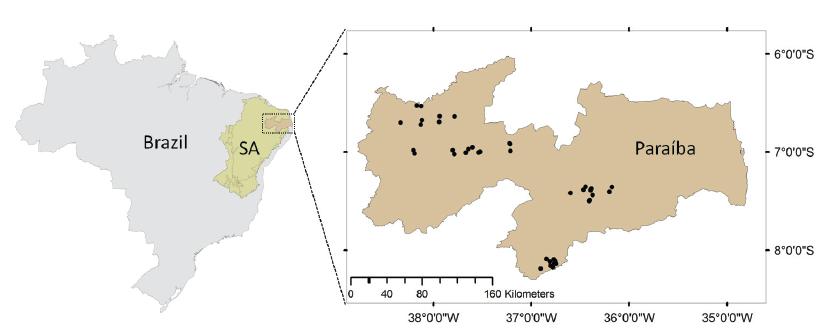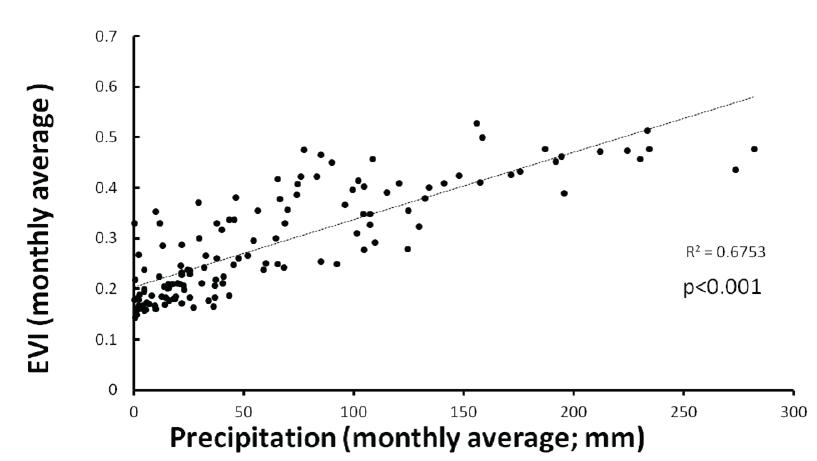ABSTRACT
Despite the knowledge of the influence of rainfall on vegetation dynamics in semiarid tropical Brazil, few studies address and explore quantitatively the various aspects of this relationship. Moreover, Northeast Brazil is expected to have its rainfall reduced by as much as 60% until the end of the 21st Century, under scenario AII of the IPCC Report 2010. We sampled and analyzed satellite-derived monthly rainfall and a vegetation index data for 40 sites with natural vegetation cover in Paraíba State, Brazil from 2001 to 2012. In addition, the anomalies for both variables were calculated. Rainfall variation explained as much as 50% of plant productivity, using the vegetation index as a proxy, and rainfall anomaly explained 80% of the vegetation productivity anomaly. In an extreme dry year (2012), with 65% less rainfall than average for the period 2001-2012, the vegetation index decreased by 25%. If such decrease persists in a long term trend in rainfall reduction, this could lead to a disruption in this ecosystem functioning and the dominant vegetation could become even more xeric or desert-like, bringing serious environmental, social and economical impacts.
Key words:
Paraíba; rainfall anomaly; ecosystem productivity; semiarid; vegetation index




